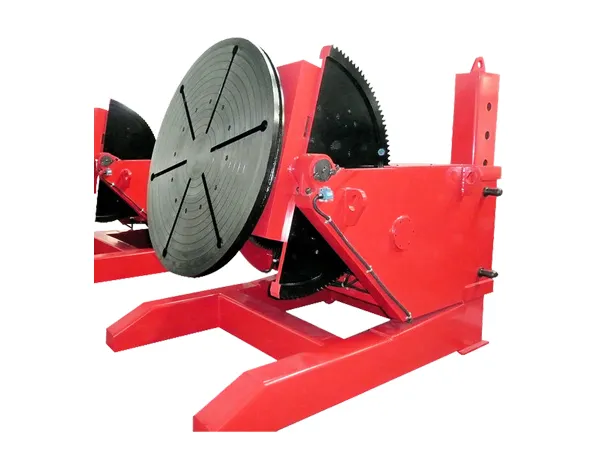What are the functions of welding positioner
A welding positioner is a device used in welding and fabrication processes to rotate, tilt, or reposition the workpiece to an optimal position for welding. This allows for more efficient, safer, and higher-quality welding operations. Welding positioners are commonly used in various industries, including automotive, aerospace, shipbuilding, and heavy machinery manufacturing.
Functions of a Welding Positioner

Enhancing Welding Efficiency:
Welding positioners allow welders to perform welding tasks continuously without frequently stopping to adjust the workpiece. This reduces downtime and increases overall productivity by ensuring that the weld is performed in the most effective position.
Improving Weld Quality:
By positioning the workpiece in the ideal orientation, a welding positioner ensures that the welder can maintain a consistent welding speed, angle, and position. This results in more uniform welds, better penetration, and reduced weld defects.
Providing Optimal Welding Positions:
Positioners can rotate, tilt, or turn the workpiece to achieve the “downhand” or “flat” welding position, which is the most ergonomic and stable position for a welder.
This minimizes the chances of defects like slag inclusion and porosity.
Reducing Welder Fatigue:
Welders often have to work on large, awkward, or heavy components that are difficult to maneuver manually. Welding positioners reduce physical strain by automating the handling of the workpiece, allowing the welder to focus on the welding process itself. This leads to reduced fatigue and better safety.
Increasing Access to Difficult Weld Joints:
For complex assemblies or multi-axis welding, positioners can precisely orient the workpiece, providing better access to hard-to-reach joints or awkward weld angles. This allows for continuous welding on intricate components.
Supporting Heavy and Large Workpieces:
Positioners are designed to handle large and heavy workpieces that cannot be easily manipulated manually. They ensure stable support and safe positioning, minimizing the risk of workpiece slippage or falls.
Automating Welding Processes:
Welding positioners can be integrated with robotic or automated welding systems to create a more streamlined, automated welding process. This is particularly useful for repetitive or high-volume welding tasks, improving consistency and throughput.
…
For more detailed information about the welding positioner functions, please click here: https://www.bota-weld.com/en/a/news/welding-positioner-function.html


